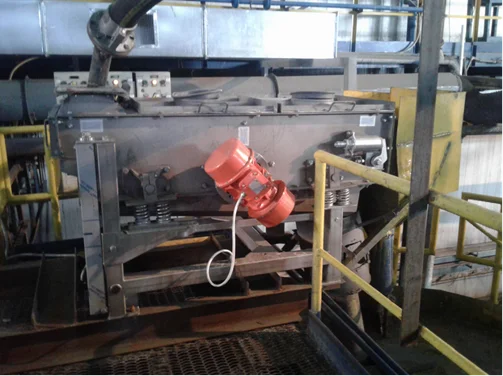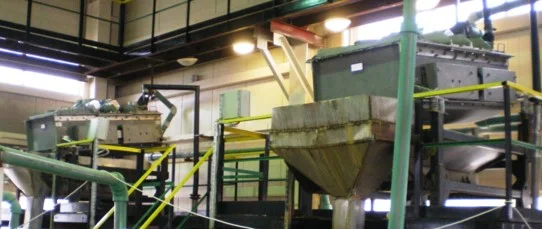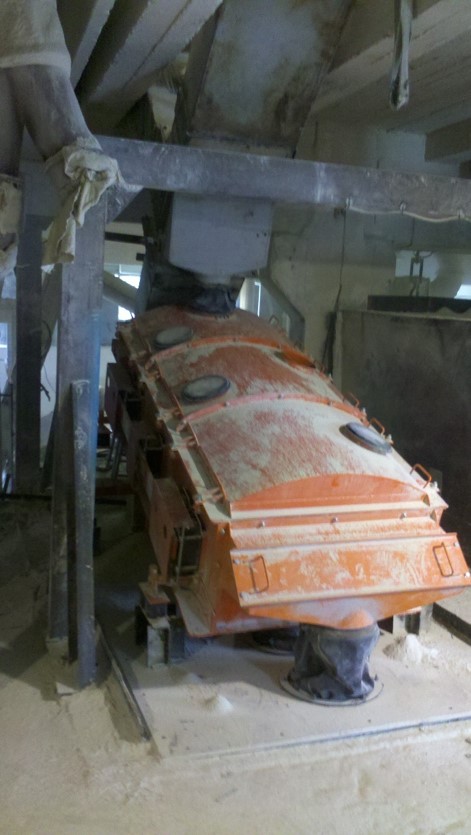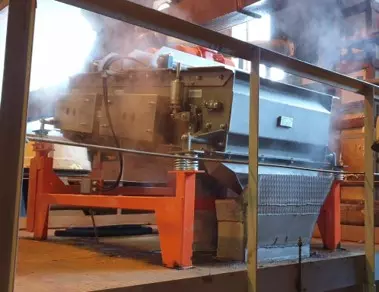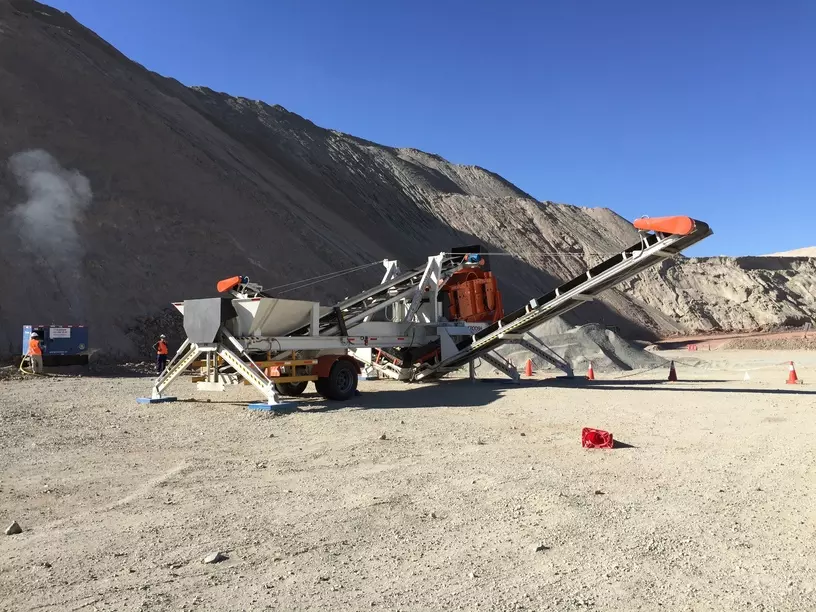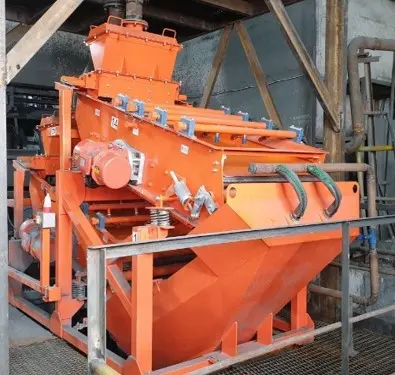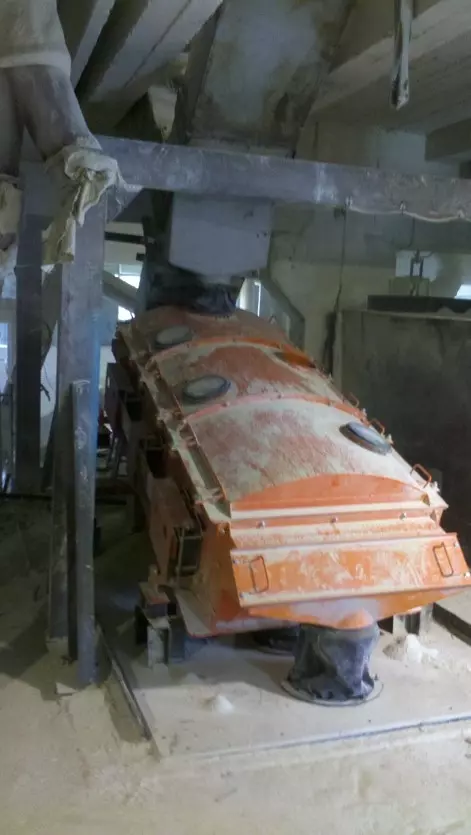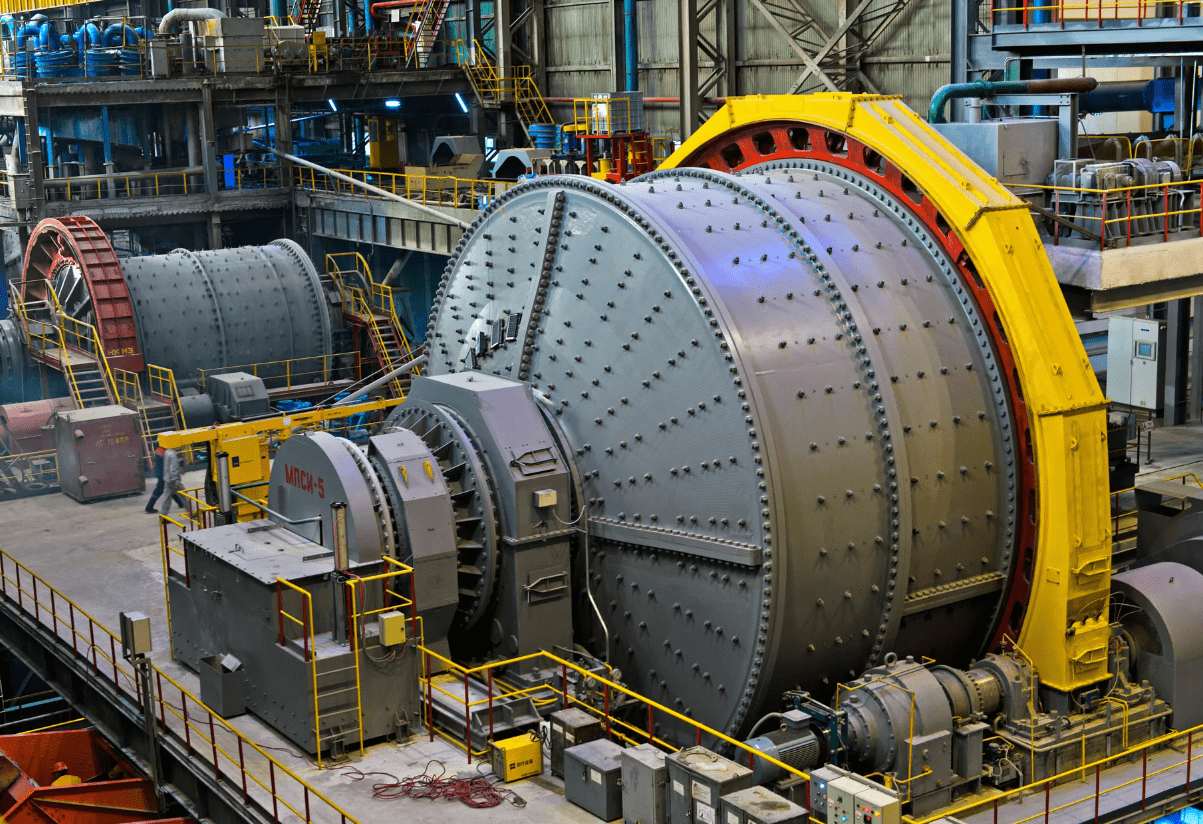
One of the problems that arise in the processing of copper-zinc ores with tailings and various concentrates is that the loss of copper is approximately 10-15%, and loss of zinc is approximately 30-35%.
The main losses of copper and zinc occur in fine grain sizes and intergrowths of valuable minerals with each other and host rocks in large fractions.
Losses occur due to over-grinding of ore and excessive sludge of mineral particles due to the imperfection of classification processes in grinding cycles.
In gold mining there are two areas where KROOSH technology allows you to solve complex problems
that conventional screeners can do much worse or not at all:
1. Gold-bearing ore: control screening of the undersize product, due to which the gold production
increases.
2. Sorption tailings: re-cleaning of sorption tailings to recover additional gold.
KROOSH screeners are used in challenging applications including wet processes.
For example, in the production of uranium (according to the technology of uranium mining by the in-situ
method), there was a need to filter the slurry (ion-exchange resin in a dilute solution of sulfuric acid)
with the simultaneous removal of small particles and foreign mechanical suspensions (clay and sand
particles) less than 0.3 mm.
The conventional vibrating screener was replaced with a multi-frequency KROOSH vibrating screener,
resulting in the following measurements:
1. significantly increased the productivity of the production line,
2. the required quality and stable dehydration of the ion-exchange resin achieved,
3. clogging and sticking of the screen mesh is excluded.
Thus, our equipment allowed us to solve a complex, previously unsolvable problem.
One of the difficult tasks that KROOSH screeners solve is working with zinc concentrate.
In particular, such a task is screening the slurry of basic non-ferrous metal sulfates in order to purify zinc sulfate from the gypsum component for efficient operation of the line.
Ferrous metal industry uses flux limestone and burnt lime, and high quality of smelting requires high quality of these products.
For example, one of the tasks is to improve the quality of raw materials for metallurgical processing by removing a fine fraction of 0-5 mm from the process with high level of product moisture up to 5%.
Sometimes the task is not so difficult in terms of technology, but its solution depends on other limitations. For example, when it’s necessary to place the screener on a small footprint as well as to ensure minimal vibration loads on building structures (for example, in the tower at +40 or +22 m high).
KROOSH equipment also solves this problem due to the high specific productivity on the one hand, and the almost absence of dynamic loads on the structure, on the other hand.


